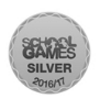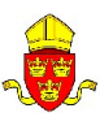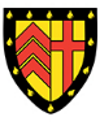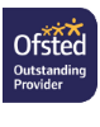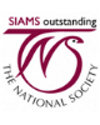Spelling, Punctuation and Grammar
 |
You can view and download the year group Emile spelling lists below.
National Curriculum Requirements
By the end of Key Stage One, Barnabas Oley pupils should be able to:
- Use some variety of sentence types as is appropriate to the given task, e.g. commands to instruct the reader; statements to give information.
- Able to introduce additional detail in their writing through the use of, for example, adjectives (including comparatives), adverbs, or simple expanded noun phrases (e.g. the small cottage / the small cottage with the red door).
- Clauses are mostly joined with co-ordinating conjunctions (and, but, or), with some use of subordination (e.g. to indicate cause or time).
- Tense is appropriate and mostly consistent in simple and progressive past and present forms.
- Sentences are usually demarcated with capital letters and full stops, or with appropriate use of question and exclamation marks.
- Capital letters are used to mark some proper nouns and always for the personal pronoun ‘I’. There is some use of internal sentence punctuation, including commas to separate items in a list and apostrophes to mark contracted forms.
- Handwriting is legible. Capital and lower-case letters are accurately and consistently formed with appropriate spacing and consistent size.
Spelling
- Usually accurately spell simple monosyllabic and polysyllabic words, including high-frequency homophones and near-homophones in context
- Draw on their developing phonological, morphological and lexical awareness to apply the rules and patterns set out in the statutory Appendix 1 of the 2014 national curriculum.
Punctuation
- Identify and use appropriate end punctuation for demarcating different sentence types (full stop, question mark and exclamation mark)
- Identify and use a capital letter to start a sentence, for names and for the personal pronoun I
- Identify and insert commas in a list of single words
- Use apostrophes to construct simple contracted verb forms from given full forms, using correct spelling
- Identify the correct use of the apostrophe to denote singular possession and sometimes use the apostrophe correctly for this purpose.
Grammar and Vocabulary
- Demonstrate familiarity with some word classes and their use, including nouns, verbs, adjectives andadverbs
- Apply this terminology to identify familiar words within each word class when presented in a context
- Recognise different types of sentences, including statements, questions, commands and exclamations
- Write different types of sentences including statements, questions, commands and exclamations when prompted
- Understand that the coordinating conjunctions and, or, but link words and clauses and use them to construct and extend sentences
- Add a subordinate clause to a main clause using a simple subordinating conjunction (e.g. when, if, because, that) when prompted
- Combine or expand given words to make noun phrases, clauses or sentences
- Identify the present or past tense forms of familiar, regular verbs and some high-frequency irregular verbs (e.g. has / had)
- Apply correct endings to regular verb forms to indicate present and past tense, including the progressive form to mark actions in progress (e.g. the lion is running / Ellie was shouting)
- Demonstrate Standard English subject-verb agreement (e.g. we were as opposed to we was)
- Identify and select some appropriate language for the context such as formal, informal or Standard English as appropriate
- Understand that the prefix un- can change the meaning of some words
- Use some straightforward suffixes to form nouns and adjectives, including the suffixes –er and –est to form comparative adjectives.
Every name is called a NOUN,
As field and fountain, street and town;
In place of a noun the PRONOUN stands,
As he and she clap their hands;
The ADJECTIVE describes a thing,
As magic wand or bridal ring;
The VERB means action, something done –
To read and write to jump and run;
How things are done, the ADVERBS tell
As quickly, slowly, badly, well;
The PREPOSITION shows relation,
As in the street or at the station;
CONJUNCTIONS join, in many ways,
Sentences, words or phrase and phrase;
The INTERJECTION cries out, ‘Hark!
I need an exclamation mark!’
By the end of Key Stage Two, Barnabas Oley pupils should be able to:
Spelling
- Spell accurately in general, including polysyllabic words that conform to regular patterns and some common exceptions to these, and less common prefixes and suffixes, for example ir-, il-, -cian, -ous;
- Spell or select the correct forms of common homophones; and
- Draw on their phonological, morphological and lexical awareness to apply the common rules and patterns and spell correctly a wide range of words, including those set out in statutory Appendix 1 of the 2014 national curriculum.
Punctuation
- Demarcate sentences accurately, using capital letters and full stops, question marks or exclamation marks as appropriate;
- Use commas to mark clauses or phrases, including fronted adverbials, (eg: The cottage, which had a blue door, looked warm and cosy. Despite these facts, people choose to eat unhealthy food.) but they may not be able to use them consistently;
- Use inverted commas to denote speech and place these correctly in relation to internal punctuation;
- Use apostrophes correctly for omission and singular possession, and mostly accurately for plural possession;
- Identify where punctuation is used to indicate parenthesis;
- Identify colons, semi-colons, single dashes and hyphens but may not be able to use them consistently.
Grammar
- Demonstrate familiarity with a range of word classes and their use, including nouns, verbs, adjectives, conjunctions, pronouns, adverbs, prepositions and determiners;
- Apply this terminology to identify familiar words within each word class when presented in a context;
- Recognise and write different types of sentences, including statements, questions, commands and exclamations;
- Demonstrate familiarity with terms relating to a sentence, including subject and object;
- Distinguish between co-ordinating and subordinating conjunctions and use them to link clauses appropriately;
- Identify and use main clauses and subordinate clauses (including relative clauses) in a sentence and construct expanded noun phrases for description and concision;
- Identify and construct fronted adverbial phrases to denote time and place (e.g.: Later that day, I met Tina.);
- Select pronouns appropriately for clarity and cohesion (e.g. The children will be visiting the activity centre. They will try all the activities it has to offer.);
- Distinguish between formal and informal varieties of English (e.g. active / passive, subjunctive) and Standard and non-Standard varieties of English (e.g. use of I and me);
- Use Standard English and formal or informal structures when appropriate;
- Select and construct regular and irregular verb forms that express present and past time, including the progressive and perfect forms (e.g. We are hoping to win. I had swum across the lake.);
- Choose tenses accurately and mostly consistently;
- Ensure that subject and verb agree when using singular and plural nouns in a sentence;
- Identify the active and passive voice in terms of sentence structure; identify modal verbs to express future time and possibility (e.g. I might go to the park. They should be home soon.);
- Identify, form and expand contractions accurately;
- Select appropriate synonyms and antonyms for a wide range of words;
- Use prefixes and suffixes to change the meaning of words, for example, to change words into different word classes;
- Recognise and use words from the same word families.
Further School Information
Updated: 11 October 2025
At Barnabas Oley Primary School, we are dedicated to nurturing every pupil’s potential, we recognise the vital role that spelling plays in developing confident, effective communicators.
Our approach to teaching spelling reflects our commitment to excellence, curiosity and perseverance, ensuring that pupils build strong foundational skills that support their broader learning journey.
Our Spelling Programme: Emile
We are excited to introduce Emile, our new, research-based spelling scheme used across Years 1 to 6. Each week, pupils participate in dedicated spelling lessons that focus on:
- Explicit teaching of spelling rules, including prefixes, suffixes, and word families.
- An emphasis on etymology (the origins of words) and morphology (the structure of words), helping children understand how words are formed and related.
- Grouping words with similar roots to deepen understanding and retention.
This approach not only builds pupils’ spelling skills but also fosters their curiosity about language, encouraging them to explore the history and patterns behind the words they use every day.
Student Practice and Engagement
To ensure that spelling learning is both effective and engaging, we provide a range of interactive activities:
- Interactive Games: Pupils can access online and app-based games tailored to scaffold learning. These games include multiple rounds that build understanding step-by-step, culminating in a final round designed to test their knowledge in a fun and motivating way
- Retrieval Activities: These are carefully designed to help pupils recall spelling patterns and rules regularly, strengthening their long-term memory and confidence in applying what they have learned.
By combining structured lessons with enjoyable practice, we aim to cultivate perseverance and resilience in our pupils, helping them to master spelling skills with confidence.
How You Can Support Your Child
We encourage parents and carers to engage with their child’s spelling learning by:
- Asking about the weekly spelling rule or word family your child is learning.
- Exploring the word origins together to spark curiosity.
- Encouraging your child to use the interactive games and retrieval activities at home to reinforce their skills.
- Celebrating their progress and perseverance in mastering new words.
You can view further details and the spellings for each year group below.
Useful Links

Back to English










